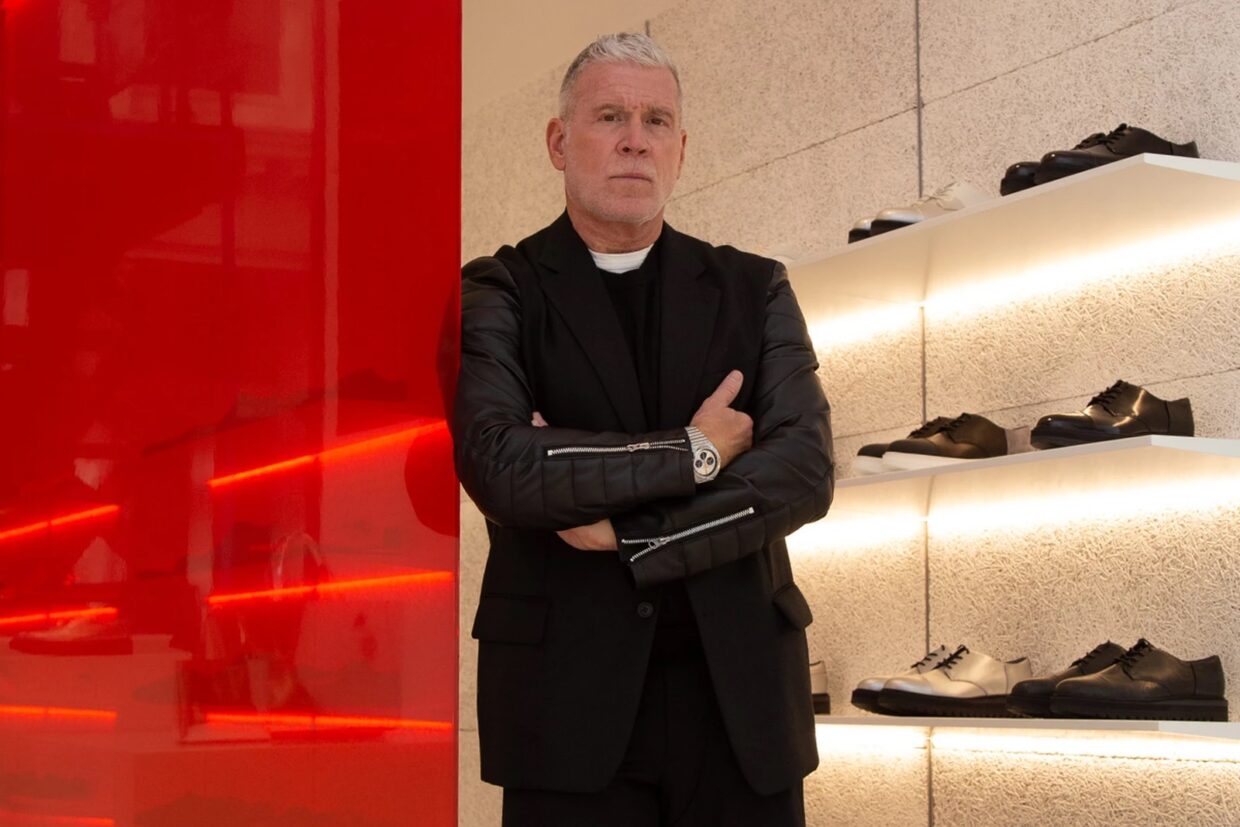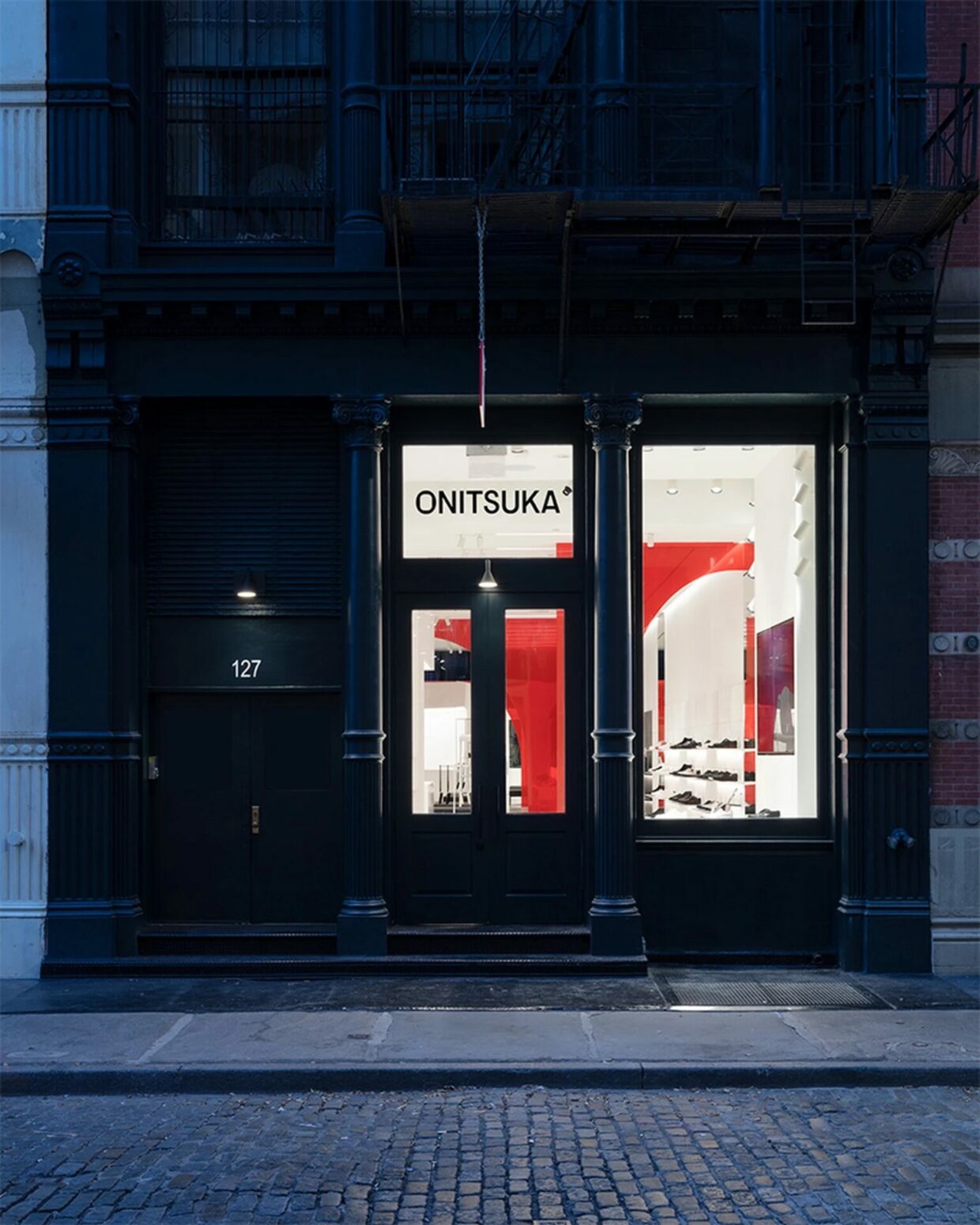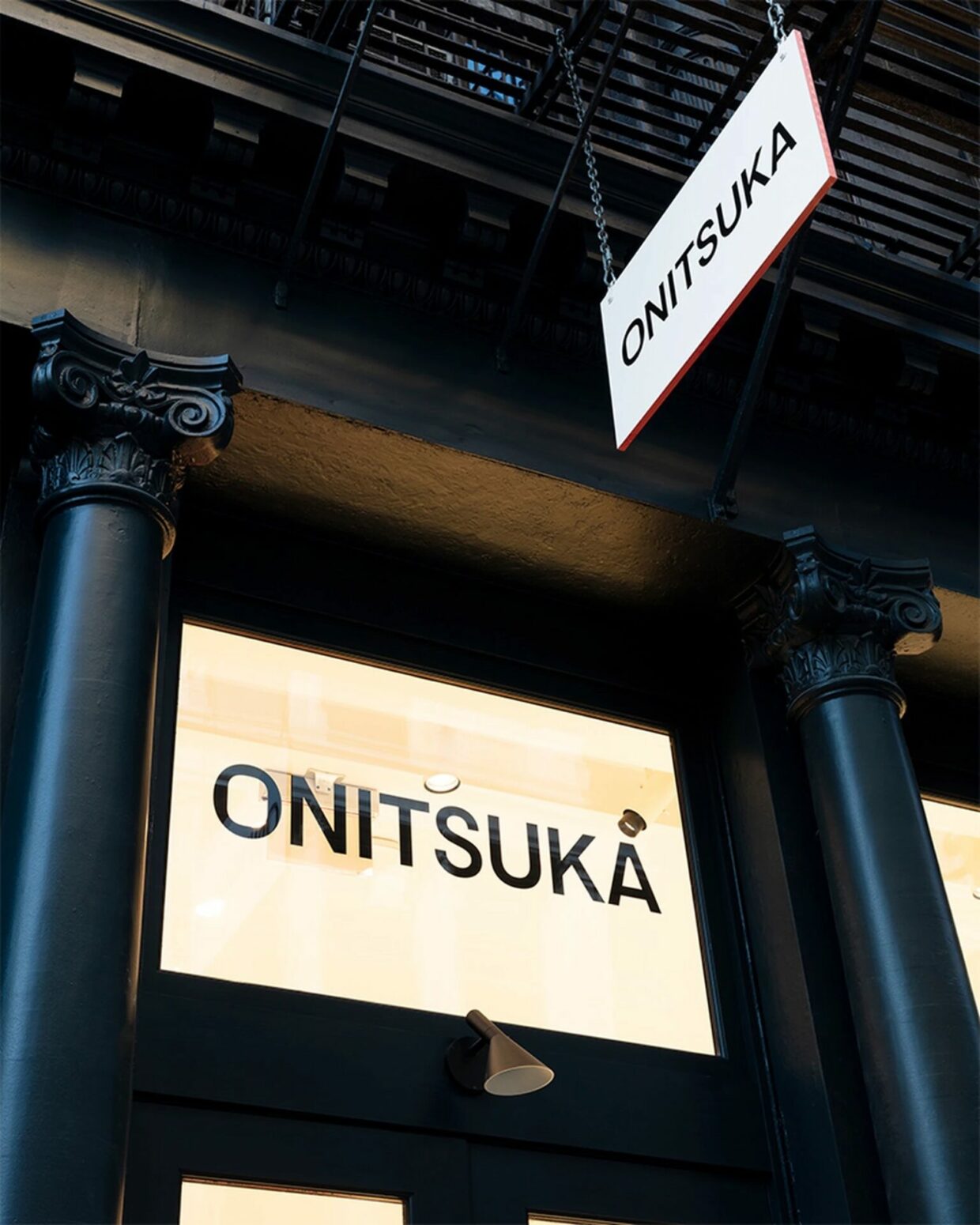NICK WOOSTER ON THE ONITSUKA, JAPAN & SNEAKER CULTURE
Jan. 28, 2021
Words by: Fabian Gorsler
Street style legend Nick Wooster is probably best known for his sharply tailored suits and handlebar mustache. But “Woost God,” as he is known in some corners of the street style internet, also sets himself apart from your average style-conscious man with his vast knowledge of brands, subcultures, and the industry.
Having worked for both Ralph Lauren and Calvin Klein in the ’90s, he established his own agency, Wooster Consultancy, in 2001. Due to his great personal style and professional experience, when Wooster partners with a brand, it’s definitely worth paying attention to. One such brand is The Onitsuka, which opened its second SoHo store in New York City in late November.
That was also when Wooster’s partnership with the brand was announced. The Onitsuka is a luxury offshoot belonging to Onitsuka Tiger, that aims to elevate the brand’s offering of casual shoes with timeless design and “made in Japan” craftsmanship.
Having traveled to Japan on numerous occasions spanning decades and having a deep affection for the country’s culture and fashion, Wooster took time out to answer Highsnobiety’s questions on all things Onitsuka and Japan.
What makes Onitsuka different to mainline ASICS and Onitsuka Tiger?
It’s a shoe brand, not a sneaker brand. The new brand takes the DNA of a historical sneaker brand and fuses that technology with traditional shoemaking. The result is a hybrid shoe that looks like a classic Goodyear welted shoe and, to the wearer, feels as comfortable as a sneaker.
How are Japanese sneaker brands different from European or American brands?
Two of the hallmarks of Japanese culture are knowledge — the never-ending search for answers — and unyielding craftsmanship. These two qualities are what make Japanese brands so distinct and so highly prized by sneaker connoisseurs. Each country has its respective strengths: the US for branding, marketing, and design; Europe for powerful designer branding and production; and Japan has a level of craftsmanship different from all others.
What does “Made in Japan” mean to you?
Unwavering quality, creative brilliance, meticulous craftsmanship.
How is Japanese sneaker culture different from that of overseas?
One observation about Japanese culture, in general, is what I would call “informed obsession.” By that, I mean that not only are Japanese people some of the most obsessed on the planet when it comes to something they love, they are also some of the best informed. They really make it their business to study something inside and out… this applies to sneakers, fashion, menswear, food, music, and sports.
What is your favorite part of sneaker culture?
Sneaker culture is the most democratic and far-reaching subculture within the world of fashion. Virtually everyone owns sneakers. It crosses all barriers: rich, poor, old, young, athletic, sedentary. Because it is so massive, it’s completely dynamic. You don’t have to be rich or well connected to tip your toe in the world of sneakers. But like everything, there are levels — not everyone can have everything — and that is what keeps the momentum alive.
How do you feel about the intersection of sportswear and formalwear, specifically in footwear?
These two tracks have been on a collision course since the 1960s when people started wearing jeans to work for the first time. What’s interesting is that all aspects of sportswear: casual, denim, performance, athleisure, sleepwear, and resort wear, are still blending, combining, and morphing into new and acceptable formats, and the way that is happening is by injecting a formal element. In footwear, the most ubiquitous shoe is the Common Projects dress sneaker that has become standard issue business attire. Sandals are the next area, as evidenced by the rise of the dress Birkenstock, and boots are having a moment this Fall/Winter.
How has that aesthetic evolved over the years?
I really think Prada should be credited with hybridizing sport and dress clothes in the 1990s with the invention of Prada Sport, designed by Neil Barrett. He took technical fabrics and executed them in tailored ways. Prada did the same with footwear. By creating the dress/sneaker hybrid, Prada paved the way for elevating sports clothes and shoes in the most innovative way. It was radical at the time. Today, we are still seeing the legacy of this innovation with collabs like The North Face x Gucci. COMME des GARÇONS has been collaborating with Nike for years. Sacai is fundamentally the deconstruction and reconstruction of this heritage. It really is where some of the most interesting design innovation in fashion is happening.
Source: highsnobiety





